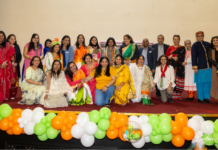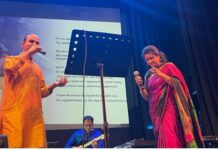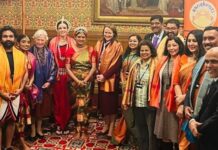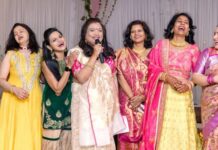Navratri and Durga Puja, both are nine-day festivals that are celebrated during the months of September-October. While the core reason behind the festival remains the same – that is victory of good over evil – the significance behind both differ.
Navratri or Navaratri, is a nine-day long festival that is celebrated by Hindus across India and Hindus all over the world during the autumn season. While it is observed unanimously in different states during the same time, the significance behind each celebration differs. Theoretically, there are four seasonal Navratris, however, the one that is observed post-monsoon, Sharad Navratri, is considered the most auspicious of the four. According to the Hindu calendar, the festival is celebrated in the month of Ashvin, which typically falls in September and October as per the Gregorian calendar. People all across the country, mainly in the northern and western region, gear up for the nine-day festival with new clothes, elaborate decoration, dances and fasts. The celebrations go on with much pomp and show and is one of the most celebrated festival in the country.
This year, Navratri begins on September 21 and ends on September 29, and the 10th day will be celebrated as Dussehra.
Significance/ History
While the core reason behind the festival remains the same – that is, the victory of good over evil – the stories behind them differs. In the eastern and north-eastern states of India, the celebration is referred to as Durga Puja. It is believed, that Goddess Durga battled with demon Mahishasura and emerged victorious. It is then that the day was marked to honour the divine Devi and celebrated, thereafter. The occasion of Durga Puja is celebrated with thousands of temporary stages called pandals. The first day of the festival, Mahalaya, begins with remembering Durga and the ones who have died. It marks the end of the period of Shradhh or Pitri-Paksha.
It is then on the sixth day that the goddess is welcomed into homes and pandals and the celebration are inaugurated. On the seventh, eighth and ninth, the puja takes place. A total of nine avatars the goddess are showcased and on the 10th day (Vijayadashami) a procession of the idol of goddess is immersed in water.
In North India, Navratri, ‘nav’ meaning nine ‘ratri’ meaning night, is a nine-night festival that is observed to celebrate the victory of Rama over Ravana. The story is enacted for nine days – called the Ramlila – and on the final day, when Rama ‘kills’ Ravana with his bow, the festival is culminated by burning effigies of Ravana and his brothers Meghnad and Kumbhakaran. During the festival, people dress up in traditional clothing, keep fasts, offer prayers to the lord and go around distributing sweets to relatives and friends.
Celebrations
Celebrations in both regions and Hindus all over the world include stage decorations, recitals of stories and the legend, chanting of scriptures, people fasting and dances such as dandiya and garba. Families get together with their relatives and friends and visit pandals and public celebrations. On the final day, the idol is either immersed in water (in the case of Durga Puja) or the effigies are burnt. Both signifying the victory of good over evil.

Readers like you, make ESHADOOT work possible. We need your support to deliver quality and positive news about India and Indian diaspora - and to keep it open for everyone. Your support is essential to continue our efforts. Every contribution, however big or small, is so valuable for our future.












Thank you very much for the information.